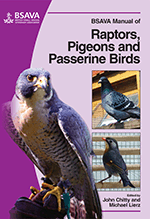
Full text loading...

Few of the passerine species commonly kept in aviculture could be described as totally specialist feeders but, for reasons of convenience, species are generally categorized according to their principle dietary component. This chapter examines general principles of a captive diet; seed as a food source; areas of additional nutritional demand; provision of vitamins; nutrition of softbills; and iron storage disease.
Passerine birds: nutrition and nutritional diseases, Page 1 of 1
< Previous page | Next page > /docserver/preview/fulltext/10.22233/9781910443101/9781910443101.33-1.gif

Full text loading...
